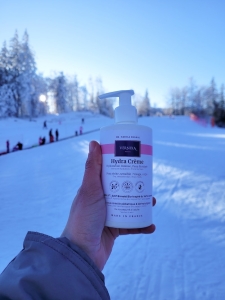Reading Time: mins
In the world of make-up, tinted lip balm stands out as a beneficial alternative to traditional lipstick. Not only does it offer a touch of color, but it's also formulated to moisturize and protect lips.
Traditional lipsticks often contain pigments and chemical preservatives such as phenoxyethanol, BHA and BHT, known for their endocrine-disrupting and potentially carcinogenic effects. Their composition may include petrochemical and mineral oil derivatives, which are harmful in the long term.
Unintentional consumption of these products can reach up to 50 milligrams a day, with traces of heavy metals such as lead and chromium, accentuating the risk of infertility and nervous disorders.
Lipsticks, especially matte ones, can dry out and irritate the lips, causing unsightly chapping and cracking.
In contrast, tinted lip balms are enriched with natural ingredients like shea butter and almond oil, forming a protective, moisturizing barrier.
These balms offer a soft, natural color, ideal for an everyday, discreet look.
They are generally free from silicones, mineral oils or parabens, reducing the risk of irritation for sensitive skin.
It's vital to scrutinize the components of lip cosmetics, minimizing exposure to dangerous chemicals.
What are the benefits of a tinted lip balm? Superior hydration, a natural finish and a less harmful formulation.
Discover our carefully formulated selection of natural ingredients, specially designed for lip care. Visit our online store to find the perfect balm.
All Rights Reserved | Tous Droits Réservés GTIN Compliance Hydra Lavant | GTIN Compliance Hydra Crème



